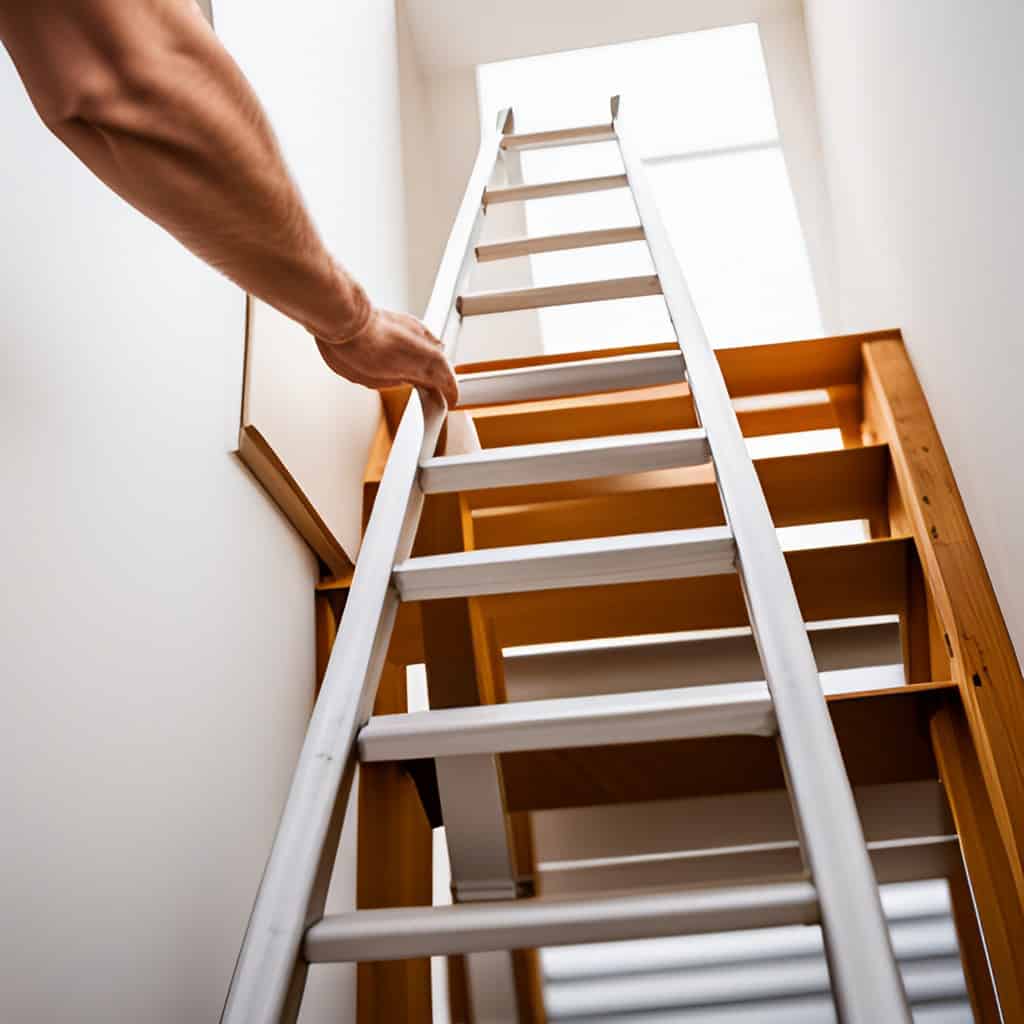Ladder Safety Tips: Rules for Climbing
Navigating ladder safety tips is critical to avoiding falls and confidently completing your tasks. This article provides a straightforward approach to ladder safety, pinpointing the selection, setup, and use of ladders. Tailored for novices and experts, these tips will elevate your safety standards and ensure you’re well-equipped to handle heights securely.
Key Takeaways
- The appropriate selection and use of a ladder, accounting for its type, material, and height, are critical safety considerations to prevent accidents and ensure stability during use in the garage.
- Proper ladder setup is fundamental to user safety, involving the 4 to 1 rule for adequate angle placement, ensuring the ladder is on a level surface, and maintaining awareness of overhead power lines to prevent electrical hazards.
- Consistent inspection, maintenance, and adherence to safe work practices, including fall protection when required and fostering a culture of safety through training and awareness, are vital to preventing falls and injuries.
Choosing the Right Ladder for the Job

Selecting the appropriate ladder for the job is paramount to maintaining safety. The type of ladder, its material, and the height you need to reach all play a pivotal role in maintaining balance and preventing falls.
We will examine these factors in more detail.
Ladder Types
Each ladder type serves a specific purpose, from step ladders to extension ladders. For instance, step ladders are ideal for electrical work or accessing high shelves, while an extension ladder is perfect for reaching elevated areas for tasks like painting and maintenance work. Knowing the correct ladder type can significantly reduce the risk of accidents. One of the most critical ladder safety tips to assist.
Ladder Materials
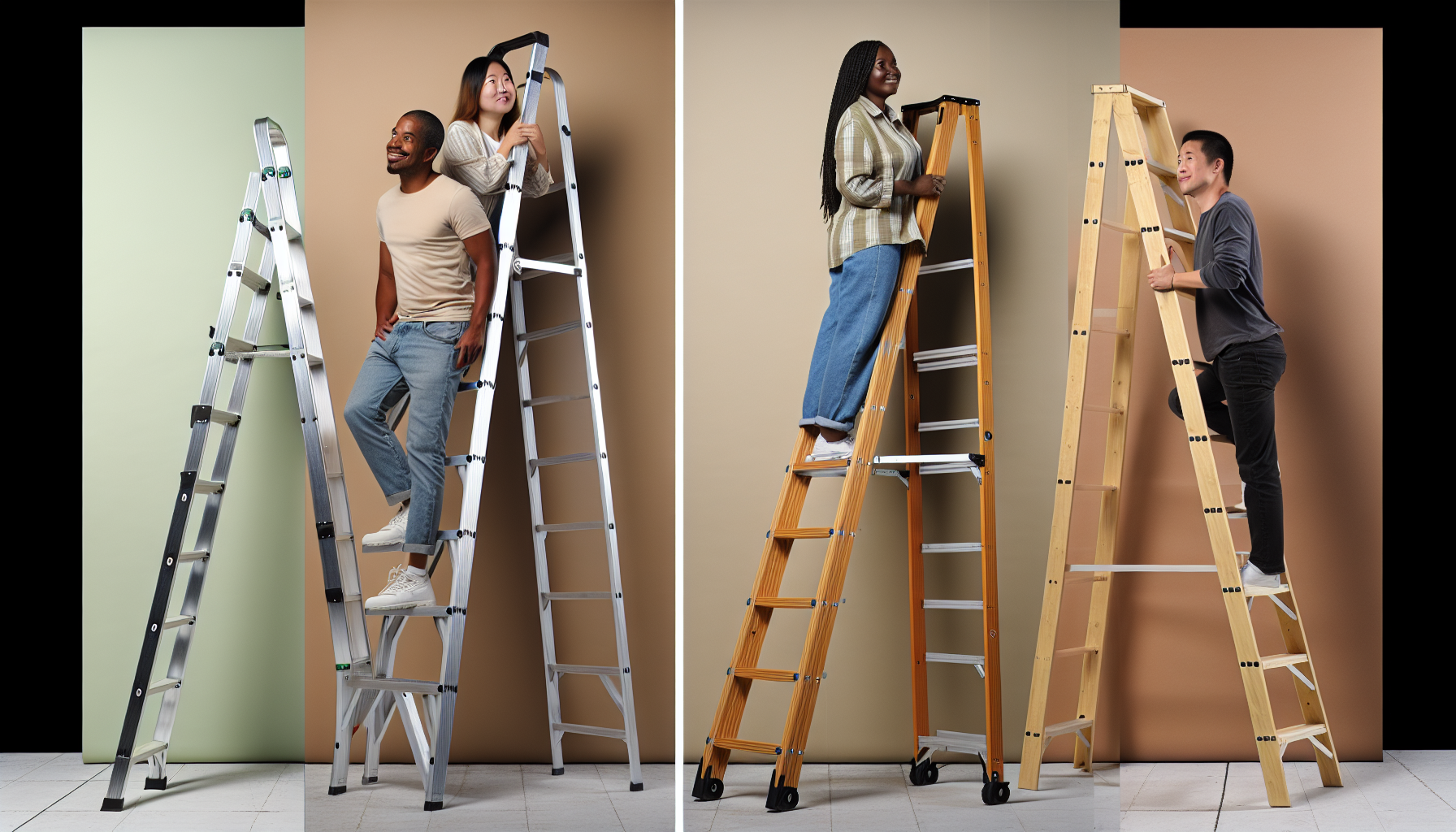
Ladders are typically constructed from aluminum, timber, or fiberglass. Each material has its own set of advantages and disadvantages. For example, aluminum ladders, considered a type of metal ladder, are lightweight and cost-effective. However, they can be challenging to work with due to their conductive nature, making them unsuitable for electrical equipment tasks. On the other hand, fiberglass ladders offer a safer alternative for such tasks. In this context, portable ladders of these materials can be chosen based on the job’s specific requirements.
Determining Ladder Height
The height of the ladder is another crucial factor to consider. Remember, overreaching can result in a loss of balance and a potential fall. Therefore, choosing a ladder height that accommodates the maximum height needed is important, preventing overreaching and ensuring ladder stability.
Proper Ladder Setup and Placement
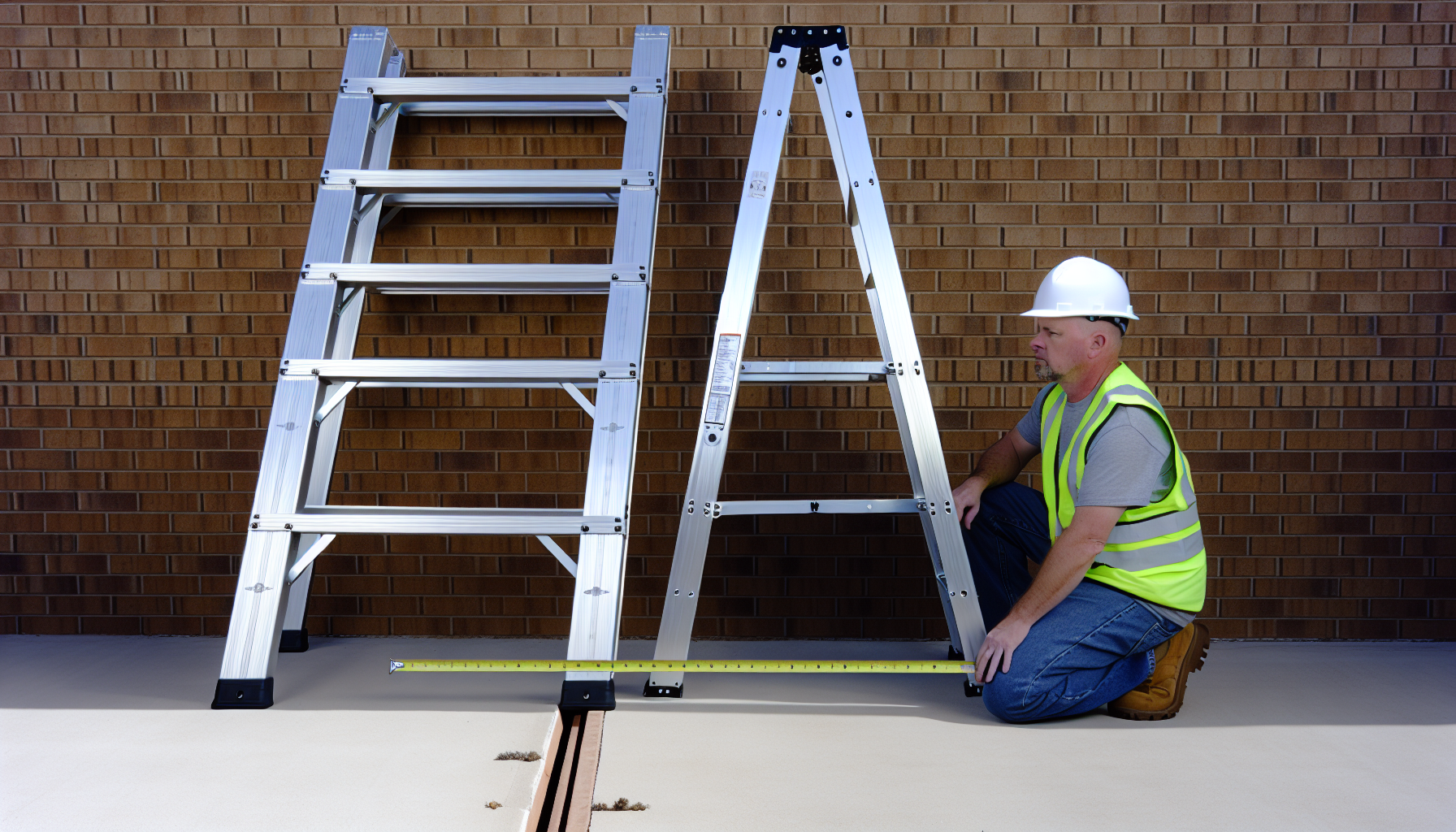
After selecting the appropriate ladder, the correct setup is fundamental to safety. This involves:
- Adhering to the 4 to 1 rule (for every 4 feet of ladder height, the base should be 1 foot away from the wall or structure it is leaning against)
- Ensuring the ladder is placed on a level surface
- Being aware of any overhead power lines
We will scrutinize each of these elements closely.
The 4 to 1 Rule
The 4 to 1 rule is a fundamental guideline in ladder safety. It dictates that for every four feet of height to be climbed, the ladder’s base should be positioned one foot away from the wall it is leaning against. A primary ladder safety tip.
Proper ladder placement enhances ladder stability and reduces the chance of it tipping over.
Level Surface and Ladder Feet
Positioning the ladder on a level surface is essential to preserving balance and averting accidents. Ladder feet are specifically crafted to inhibit the movement and slippage of the ladder. They are available in diverse materials to accommodate different conditions and surfaces, enhancing the ladder’s stability during usage.
Overhead Power Line Awareness
When positioning a ladder near overhead power lines, always operate assuming all lines are energized. It is advisable to adhere to the 1:4 rule, which involves moving the ladder 1 foot away from the line for every 4 feet of ladder height. This enhances safety precautions and helps prevent electrical hazards, such as electrocution.
Climbing and Working Safely on Ladders
With the ladder set up correctly, you can ascend and work on it safely, enjoying a ladders-free experience on the upper landing surface. This involves always facing the ladder, carrying tools properly, and avoiding overreaching. Keep these ladder safety tips in mind to prevent injuries.
Facing the Ladder
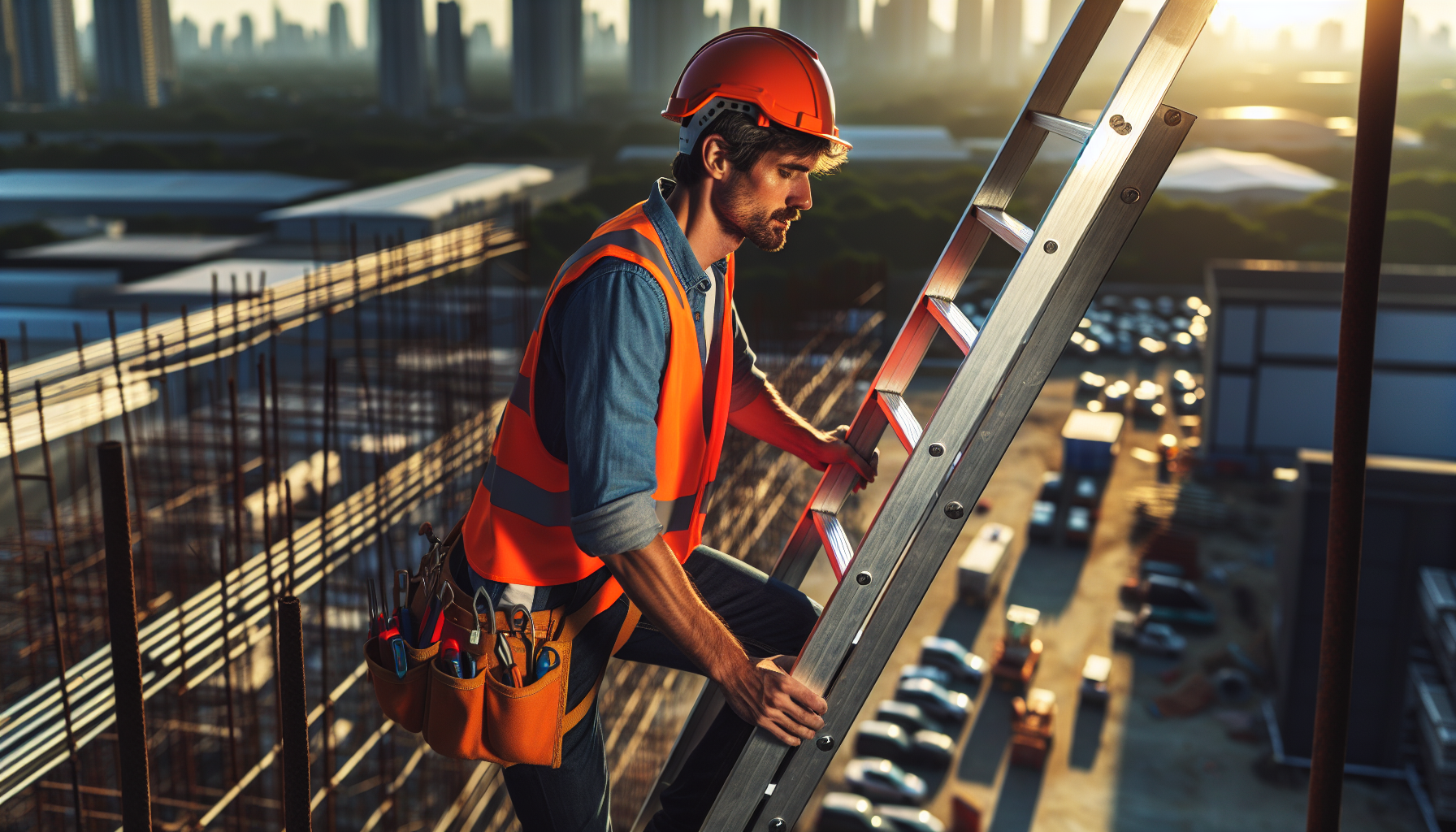
Facing the ladder while climbing enables individuals to uphold the three points of contact rule, ensuring that two hands and one foot, or two feet and one hand, are always in contact with the ladder. This is essential for stability and safety.
Carrying Tools
Properly carrying tools on a ladder contributes to the even distribution of weight, which is essential for maintaining balance, comfort, and control. It is advisable to refrain from carrying heavy tools that may disturb the balance and to consider alternative methods, such as hoisting, for handling heavy equipment.
Avoid Overreaching
Overreaching can result in a loss of balance and a potential fall. Therefore, it’s essential to:
- Keep your body centered between the ladder side rails at all times
- Refrain from leaning excessively to the sides
- If reaching your work area becomes challenging, descend carefully and reposition the ladder closer to your work area.
Regular Ladder Inspection and Maintenance
Consistent inspection and maintenance of ladders are imperative for safety. This involves checking rungs, rails, and other components and practicing proper storage and care.
Checking Rungs, Rails, and Other Components
During a ladder inspection, it is crucial to examine the following:
- Ladder rungs or steps for any signs of damage or wear
- Ladder sides for any signs of distortion
- Other components, such as spreaders, locking mechanisms, and safety feet
Proper Storage and Care
Proper storage and care of a ladder can significantly extend its lifespan. It’s important to store the ladder in a dry, well-ventilated location and clean it regularly. This maintains the ladder’s integrity and helps prolong its lifespan.
Fall Protection and Safe Work Practices
Implementing fall protection and adherence to safe work practices can drastically reduce the risk of falls and mishaps. This involves understanding when to use fall protection and the types of fall protection available.
When to Use Fall Protection
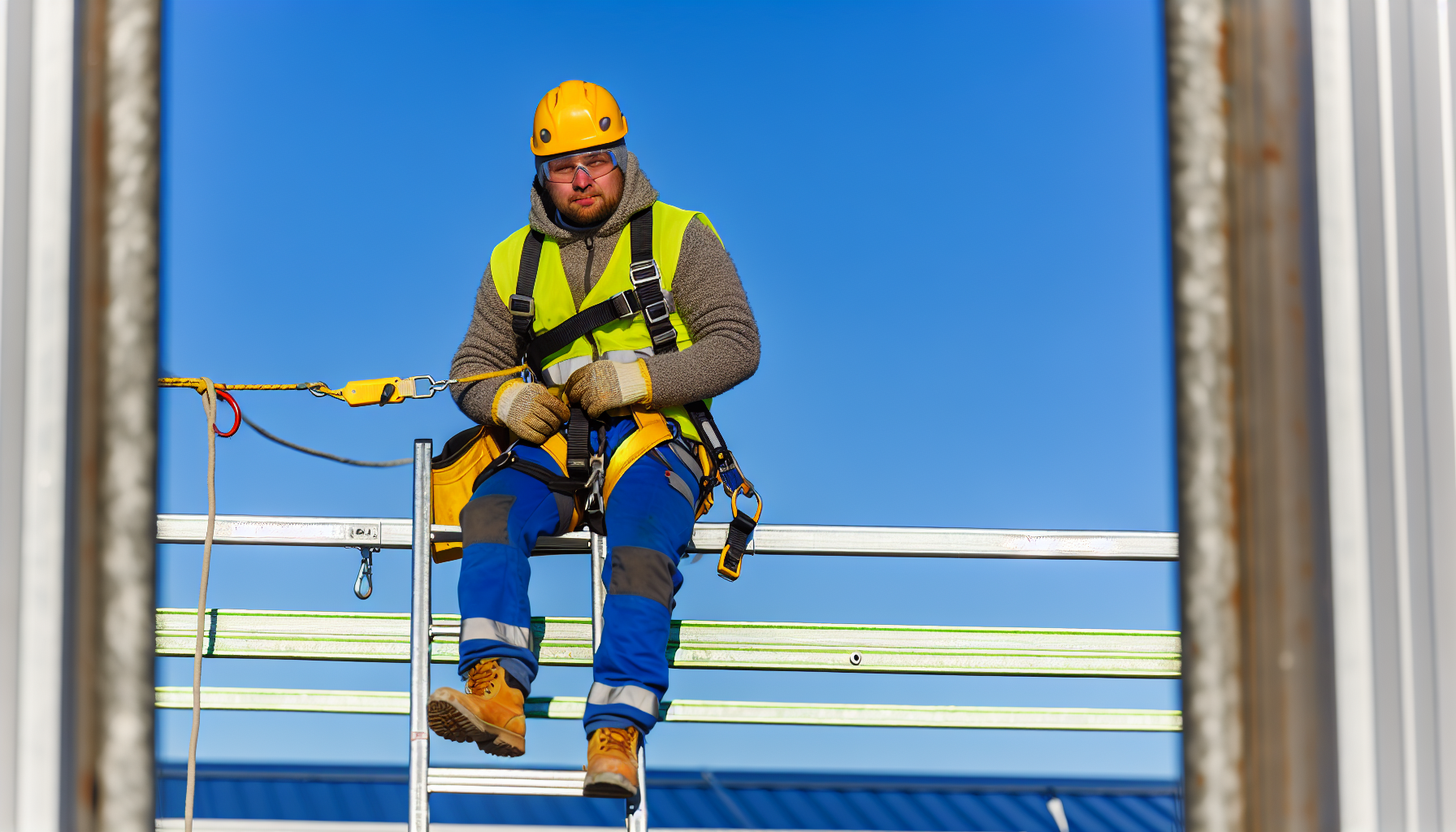
Fall protection is necessary for construction workers exposed to a potential fall from an unprotected edge six feet or more in height. Furthermore, fixed ladders over 24 feet should have a personal fall arrest system.
Understanding when to use fall protection is crucial for ensuring safety.
Types of Fall Protection
Several types of fall protection equipment are available, such as safety harnesses and ladder safety systems. These options ensure the safety of workers when ascending to heights and in the event of a slip or fall.
Training and Awareness
Promoting ladder safety training and awareness is vital to accident prevention and establishing a secure work environment. This involves following OSHA guidelines and fostering a safety culture within the workplace.
We will delve into these factors.
OSHA Guidelines and Resources
Adhering to OSHA ladder safety guidelines ensures compliance and prevents accidents. OSHA offers resources such as training requirements for employers to educate workers in hazard recognition and the proper use of ladders, promoting safe ladder practices.
Encouraging a Safety Culture
Fostering a safety culture within the workplace involves providing regular ladder safety training, promoting open communication, and encouraging employees to prioritize safety in all tasks.
A safety culture can significantly reduce the risk of accidents and injuries by following essential safety tips.
Summary
We’ve covered a lot of ground in terms of ladder safety. Each step is crucial in preventing falls and accidents, from choosing the right ladder and setting it up properly to climbing safely and maintaining it. Let’s prioritize ladder safety and ensure a safe, productive work environment.
Frequently Asked Questions
What are OSHA safety requirements for ladders?
Following OSHA’s safety requirements, such as ensuring the ladder can support four times the maximum intended load and keeping it free of slipping hazards, is essential when using ladders. Remember to also use ladders only for their intended purpose.
How to use a ladder?
When using a ladder, remember to keep it close to your work, lift and carry it instead of pushing or pulling, face the ladder when climbing, maintain a firm grip, and keep both feet on the ladder. Work at an appropriate height for the task you are performing. Remember to keep these ladder safety tips in mind.
How do I choose the right ladder for the job?
To choose the right ladder for the job, consider the type, material, and height required. This will ensure safety and efficiency.
When should I use fall protection?
You should use fall protection when working on ladders above 2 meters or as required by OSHA guidelines, ensuring your safety on the job.

